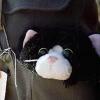Advice for oiling early balance staff.
-
Recently Browsing
- No registered users viewing this page.
-
Topics
-
Posts
-
Thanks for the help guys! VWatchie I already found your thread but I'll check it again. Nice to know about acetone, I still have to get the shellac off since I made a little mess. I adjusted the jewel, put new shellac (the so called soldering technique, pallet tool too hot this time so the shellac "wire" melted in air before getting in contact with jewels or fork) rinsed the pallet fork and put it back dry. Amplitude is now in the 240-250 range that I expected in the first place. I guess there's enough oil in the escape wheel teeth already but I'll check that later. The mainspring was pretty beaten so a new one would probably boost the amplitude even further. Nice to learn new things. Now I have another thing to look for while disassembling. I wonder if the watch left the factory that way.
-
By nickelsilver · Posted
These are all American movements (with the exception of the "Rubis"), and are all almost certainly "negative set" which means the stem is part of the case. So it's normal that they are all missing- they are with their cases. You will need male square bench keys to wind/disarm them. Vintagewatchstraps has a great writeup on the different systems. But basically, any American "x" size movement will fit any case for that size, possibly with some adjusting of the stem position. With Swiss movements, there is some interchangeability between calibers, usually within the same maker's range, but not really overall- there are thousands of different stems out there. -
Hi, I'm very new to watchmaking and this is my first time posting here. I've bought a lot of 10 vintage pocket watches size 0s from e-bay and just got them today. Most of the balance wheels sprung quite freely and thus seemed like a worthy endeavor as a first batch for exploration. I've just realized that none of them have any winding stems. Is there any way I could source appropriate winding stems for the movements? There seems to be assortments of various stems selling in bulk on aliexpress, but would any of them fit? I've read on other threads that some people lathe their own stems (which is waaaay out of my current skill set, which is pretty much nil). Others say that you 'just have to try a few and see if they fit'. I would much appreciate any advice for this matter. Thanks!
-
By LittleWatchShop · Posted
Nice work. In the last year, I have been servicing Accutron 218s. I have the official Accutron hoder that provides electrical contact to the movement. It is a pretty clever design. There is a cut in the ring of the holder (shaped like a "C"). When in relaxed state, the holder is slightly smaller than the watch movement. You spread the cut slightly and drop the movement in and release. Very clean. I have made 3D versions of this setup. Have not explored using it generally for other movements.
-









Recommended Posts